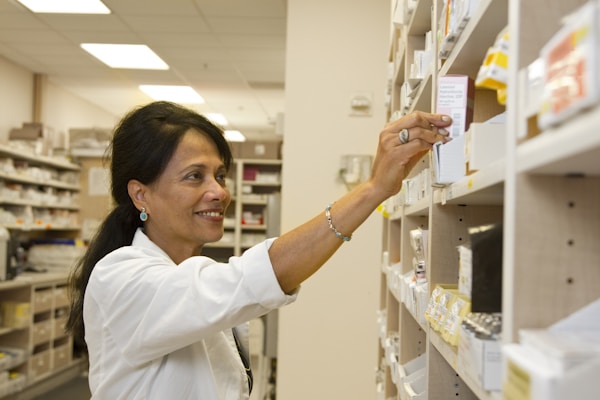Pharmacies play an important role in preventing medication errors. With a pharmacist’s knowledge and skill, they can help ensure that patients receive the right medication and dosage, reducing the chance of an accidental overdose or incorrect prescription. Keep reading to find out more about how pharmacies can help prevent medication errors.
They can provide education to the patient.

When it comes to medication, everyone wants to make sure they are taking the right dosage at the right time. However, medication errors are not uncommon, and they can lead to serious health consequences. Pharmacies like Springfield Pharmacy are aware of this and take customer education seriously. Educating patients about medication is a crucial aspect of stopping medication errors.
Pharmacies can provide education to patients to prevent medication errors. They can help patients understand the correct dosage, time and frequency of medication, and side effects. They can also explain the importance of taking medication as prescribed and what to do in case of a missed dose. Springfield Pharmacy has a team of trained professionals who can guide the patient through the medication process, ensuring that they are aware of how to take their medication correctly. This education can go a long way in reducing the risk of medication errors and ensuring the patient’s well-being.
They can use automated dispensing systems.
Pharmacies play a crucial role in the healthcare industry by ensuring that patients receive the correct medication in the right dosage. However, medication errors can occur due to a variety of reasons, such as incorrect dosing or dispensing of the wrong medication. These errors can have serious consequences such as adverse reactions, hospitalizations, or in some cases, even death. To prevent such errors, pharmacies can use automated dispensing systems.
Automated dispensing systems provide many benefits, including increased accuracy and efficiency. They reduce the chance of dosage errors and ensure that the correct medication is dispensed to the patient. Pharmacists can also program these systems to provide warnings when medications may interact with one another or if a patient is receiving a medication that they are allergic to. This can prevent dangerous drug interactions from occurring.
They can take advantage of electronic health records.

In healthcare, medication errors are a major concern as they can lead to serious consequences for the patient. According to the World Health Organization (WHO), medication errors result in at least one death every day and harm thousands of people annually. Fortunately, technology has played a vital role in preventing these errors, with Electronic Health Records (EHRs) being one of the best tools available. Pharmacies, in particular, can take advantage of EHRs to prevent medication errors and ensure better patient outcomes.
EHRs can help them to have access to the patient’s medical history, such as their allergies, current medications, and previous diagnoses. This information enables pharmacists to better manage medication therapy for the patient and ensure that the medication prescribed is appropriate, safe, and effective. Moreover, EHRs can alert the pharmacist to potential drug interactions and adverse effects, enabling them to provide recommendations or suggest alternatives to the prescriber.
They can use barcode scanning systems.
With the advent of barcode scanning systems, the risk of medication errors can be significantly reduced. Pharmacies can use barcode scanning technology to ensure that patients receive the correct medication at the correct dosage.
Barcode scanning systems offer a quick, reliable, and accurate way to process prescriptions. By scanning the prescription’s barcode, pharmacists can electronically verify that the prescription is correct and matches the prescription. This can help to prevent human error or misreading of handwritten prescriptions. Additionally, when the patient receives the prescription, the barcode can be scanned again to ensure that the prescription is being administered to the correct patient.
Overall, pharmacies can play an important role in helping to prevent medication errors by ensuring that prescriptions are filled correctly and that patients receive the right medication at the right time. By providing education to both the patient and the pharmacist, as well as using technology such as automated dispensing systems and electronic health records, healthcare professionals can help reduce the risk of medication errors. These strategies and processes can help ensure that patients receive the correct medications and are able to take them safely and effectively.






